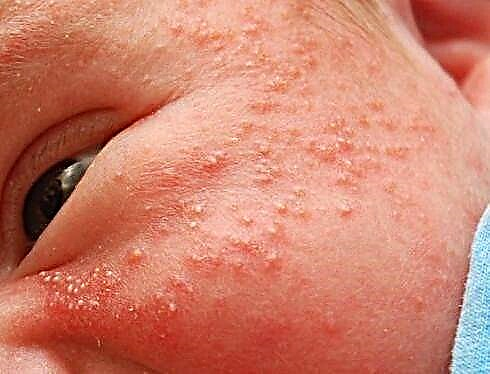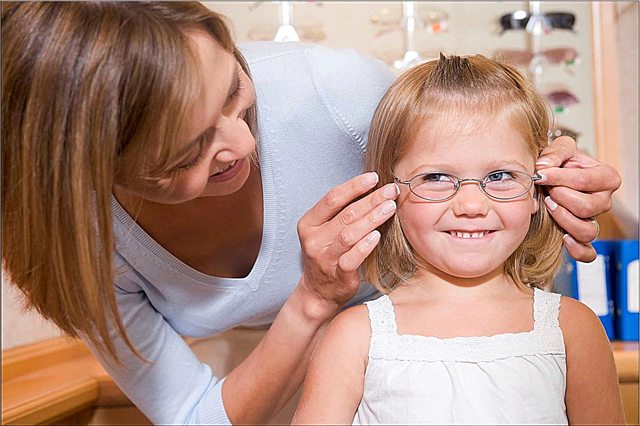
There are no children in the world who have never had conjunctivitis. No matter how carefully parents treat hygiene, it is impossible to raise a child and never treat this unpleasant eye disease. The famous doctor Evgeny Komarovsky tells about why eye inflammation occurs, what factors contribute to this process and how to treat the baby.
What it is
Conjunctivitis - inflammation of the mucous membrane of the eye. It is usually caused by viruses, but one fifth of all diagnoses in children are due to bacterial lesions of the mucosa. Quite often, the disease is allergic, and is accompanied by a general allergy to something. Sometimes a child develops inflammation after a minor injury to the eye, for example, if small, solid dust particles have fallen into it.
The symptoms are almost identical in almost all cases: a red, streaked eyeball, photophobia, pain in the eye when blinking, moving the eyeball from side to side, watery eyes, sometimes pus accumulates in the corners of the affected eyes. Sometimes there is a decrease in vision. Medical reference books and encyclopedias indicate that conjunctivitis is most dangerous for children with blue and light eyes, as they are more sensitive to light. In almost all cases, the disease is highly contagious.


Why does a child have conjunctevitis? Dr. Evgeny Komarovsky raises such a question in his program.
Komarovsky about conjunctivitis
The disease in most cases is directly related to acute respiratory viral infections, says Komarovsky. The fact is that many viruses that can enter the child's body through the nasopharynx feel great on the mucous membrane of the eyes, which are located nearby. It is they who cause viral conjunctivitis.
That is why all over the world, except for Russia, perhaps, and some CIS countries, according to Komarovsky, this eye ailment is not treated by ophthalmologists. This is more the task of pediatricians and family doctors. The disease is serious, but it cannot be called purely ophthalmic. The only exceptions are very complex cases, but such conjunctivitis, according to the doctor, is, fortunately, very rare.


Bacterial conjunctivitis occurs when pathogenic bacteria enter the mucous membrane of the eye. If viruses are mainly transmitted by airborne droplets, then bacteria is just the case when a child actively rubs his eyes, and even on the street, and even after playing in a sandbox. Or small debris got into his eye, he rubbed his eye, as a result of microtrauma, bacteria got to the affected mucous membrane, which like this habitat no less than viruses.
Allergic conjunctivitis causes an antigen protein that caused an inadequate reaction of the body, as well as a number of external factors - the presence of an allergen in the air, too dusty and polluted air, spraying of poisonous and toxic substances, household chemicals, perfumes.
Distinguishing one type of disease from another is not so easy, says Yevgeny Komarovsky, because the symptoms are really almost the same. The parents themselves can help the doctor by telling in detail what events preceded the onset of eye inflammation, what the baby ate and drank, where he walked, what he played with, what was ill. If the whole family went to visit, and there their eyes began to water, bought a new toy or washed T-shirts with panties with new washing powder or conditioner, then the doctor will most likely diagnose "Allergic conjunctivitis."


If the parents of other children who attend the same group in kindergarten with your child also complain of reddening of the eyes of the toddlers, besides, the child has signs of a runny nose, coughing and, in general, he looks somehow wrong, you can say about viral conjunctivitis.
If nothing new appears in the house, the washing powder is the same, and all the other children from the baby's environment are completely healthy, and your child's eyes turned red and began to fester, then the child probably has a bacterial form of the disease.
Thus, parents can also determine the cause of the disease, but if this fails, it is better to consult a doctor, and it is advisable to use a house call, since you should not forget that conjunctivitis is contagious enough, if it is viral, and put other small patients of the clinic at risk there is no point.


When is a doctor required?
According to Evgeny Komarovsky, any self-medication is strictly prohibited if conjunctivitis, and even more purulent conjunctivitis, occurs in a newborn, as well as in children under one year old. The reason for going to the doctor should also be such an ailment in which there is no improvement in the condition of the eyes for two days.
The doctor should also be called in case of photophobia, even if the redness of the eyeball looks insignificant and insignificant. With this symptom, the baby will squint, close up from bright light, avoid rooms with sufficient lighting, may start asking to turn off the light and complain of pain in the eyes, which is caused even by daylight.
If a child complains of intense pain in the eyes, a decrease in the clarity of vision, you should immediately call a doctor, says Komarovsky. Inflammation of the eyes, in which watery blisters appear on the upper eyelid, will also require urgent medical attention.


Treatment according to Komarovsky
When it comes to common viral conjunctivitis caused by adenoviruses, says Yevgeny Olegovich, doctors cannot help. Such inflammation of the eyes does not need treatment, since in 5-7 days the baby's body develops immunity and quite effectively copes with the inflammatory process. The exception is herpes lesions of the organs of vision by herpes viruses. It is difficult, with the formation of bubbles on the eyelids, photophobia, pain.
Bacterial conjunctivitis needs antibiotic therapy, since there are many drugs now, and you can always choose the most suitable one for the baby, given his age and the severity of the inflammatory process. Komarovsky says that local antibiotics are very effective for this disease, and you should not be intimidated if the instructions for the drops or ointment indicate that the drug is not intended for use by children.
Manufacturers write this when there is not enough research, and usually this antibiotic is not used for children. Ophthalmologists do not exclude the appointment of just such drugs, because they know for sure that when applied topically (to the eye), there will be no side effects, because the active substance from the eye will not go anywhere and will not begin to act on the body systemically.


Allergic conjunctivitis is the most difficult, because before treating such an ailment, it is imperative to find the allergen that caused the inflammation, otherwise the therapy simply will not give any result. On the other hand, if the antigen is found and established, the treatment will be quick and simple - it will be enough just to eliminate the irritant. If you are allergic to animal hair, then you need to limit the baby's contacts with four-legged pets, if to household chemicals - remove the chemicals from the house away and do cleaning without it.
If the allergen cannot be eliminated or it is not found, there are many different drugs to alleviate this condition. Komarovsky says that hormonal drops and ointments are fully justified, which act faster than non-hormonal agents. This treatment is often combined with oral allergy medications, such as antihistamines, as prescribed by your doctor.
Komarovsky considers saline to be the best way to wash out sore eyes, since ordinary water and other agents cause irritation.
Saline can be bought at a pharmacy, or you can make it yourself. Evgeny Olegovich recommends taking a teaspoon of salt per liter of water for this. It is this solution that will most beneficially affect the mucous membrane of the eye.


About folk treatment
Folk remedies that are offered by fans of alternative medicine, Komarovsky advises to use with great care, be sure to check your own common sense. Advice to drip urine into the eye should not be taken seriously at all, says Evgeny Olegovich. With viral conjunctivitis, in general, there is not much difference in what the eye will be washed with - tea leaves, chamomile decoction, or pharmacy saline.
Even the most recommended herbal decoction will not be able to accelerate the recovery from a disease caused by viruses. Conjunctivitis will go away only when the immune system develops a defense. But in relation to bacterial eye disease, the beneficial properties of chamomile or tea leaves can be used for the benefit of the child.
However, Komarovsky warns parents against self-diagnosis and treatment, especially with folk remedies, since improper treatment or untimely therapy can cause irreversible changes in the functions of the eye - vision can decrease significantly, up to complete blindness.


Doctor Komarovsky's advice
If a child visits the pool, it is better to buy him special glasses that will help avoid contact of the delicate mucous membrane of the eyeball with chlorinated water. If, nevertheless, the child returned from the pool with reddened eyes (this happens quite often), he needs to rinse his eyes and nose with saline.
Conjunctivitis is contagious in any form, adenoviral and herpetic varieties are especially dangerous. During the treatment, Dr. Komarovsky advises to refuse to attend kindergarten and school, public places where the child can contact others. At home, it is better for the patient to select individual household items, dishes, bed linen and towels in order to protect the rest of the family members and especially other children, if they are in this family. There is no specific quarantine period for this disease; you can return to visiting preschool and school institutions if there are no problems with eyes for 2-3 days.
The drugs should be instilled correctly. With unilateral conjunctivitis, it is necessary to instill in both eyes, because there is a high risk of transferring the infection from the sick eye to the healthy one. Komarovsky advises moms and dads to learn how to drip into the eyes correctly, pulling the lower eyelid. It is in this lower conjunctival sac that drops should fall. In this case, do not touch the eyelid with a pipette or dispenser. Drops must be warmed in the hand to body temperature before instillation. The procedure should be started with a healthy eye, so the risk of infecting it is significantly reduced.
The best prevention of eye inflammation is to teach a child to touch his eyes less with his hands, rub them, especially on the street, and observe eye hygiene. It is important to teach your baby not to overwork his eyesight, not to sit for a long time in front of a computer monitor, not to watch TV from too close a distance from the screen. These systematic measures will be effective in preventing bacterial inflammation. It is much more difficult to protect children from the viral, but the standard prevention should be to increase the child's immunity.


To do this, he must play sports, eat healthy and vitamin-enriched food, walk a lot, breathe fresh air, and lead an active lifestyle. Prevention of allergic inflammation as such does not exist, because no one is immune from the allergen. But even here, in many respects, the probability and severity of the disease will be determined by the state of the baby's immune defense. The healthier a family is, the less likely it is to develop the disease.


Why otitis media often occurs with conjunctivitis, see the program of Dr. Komarovsky.



